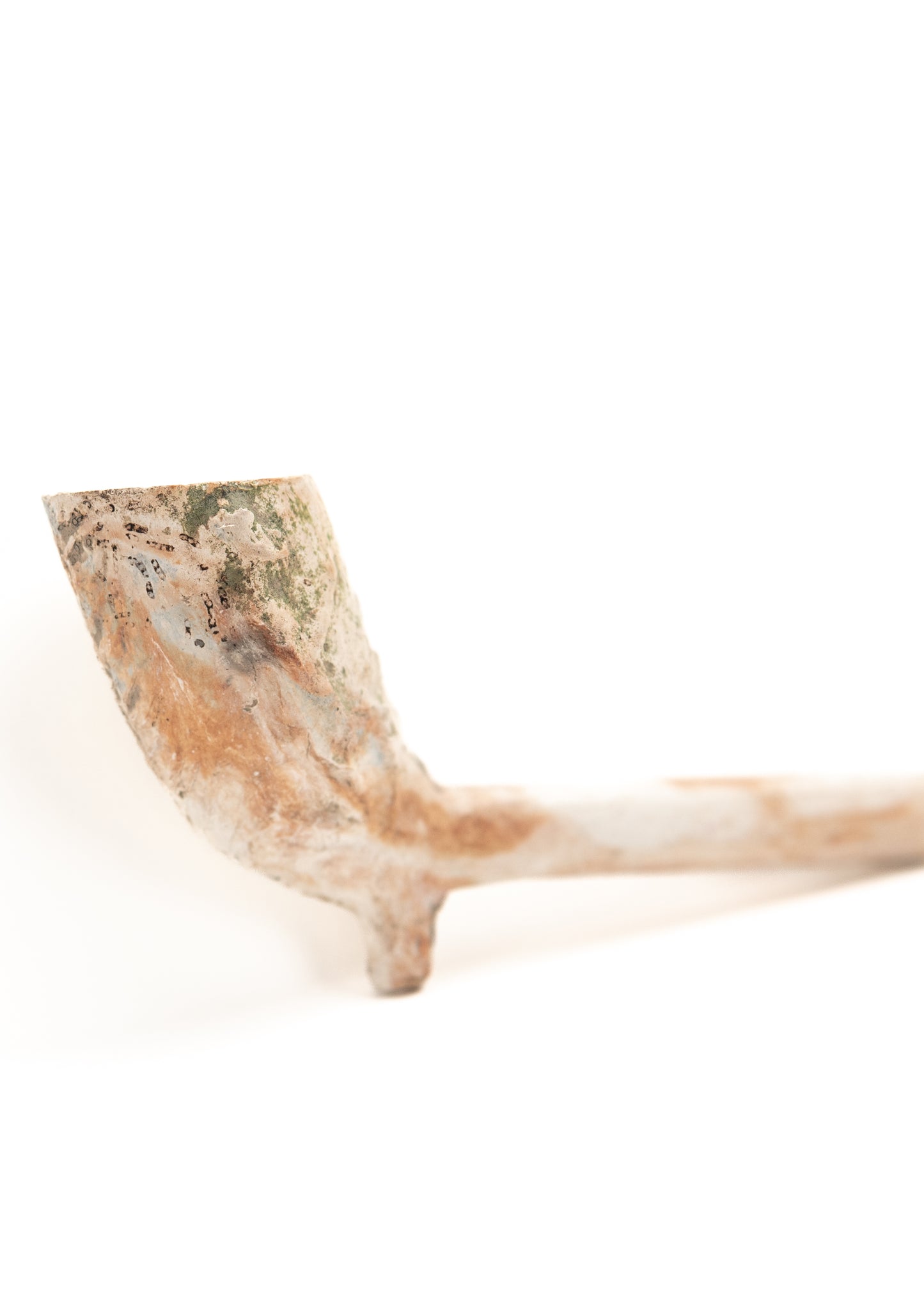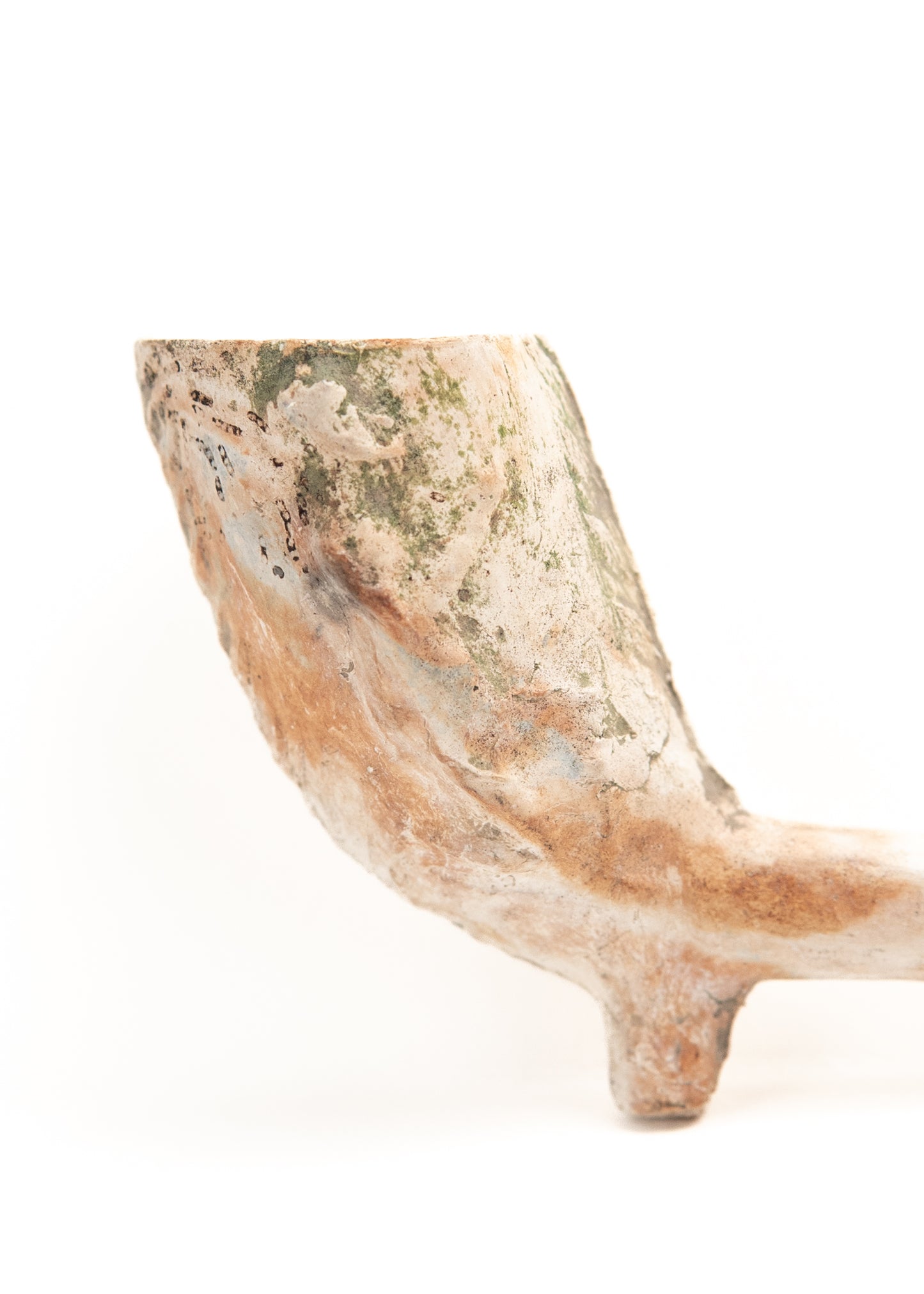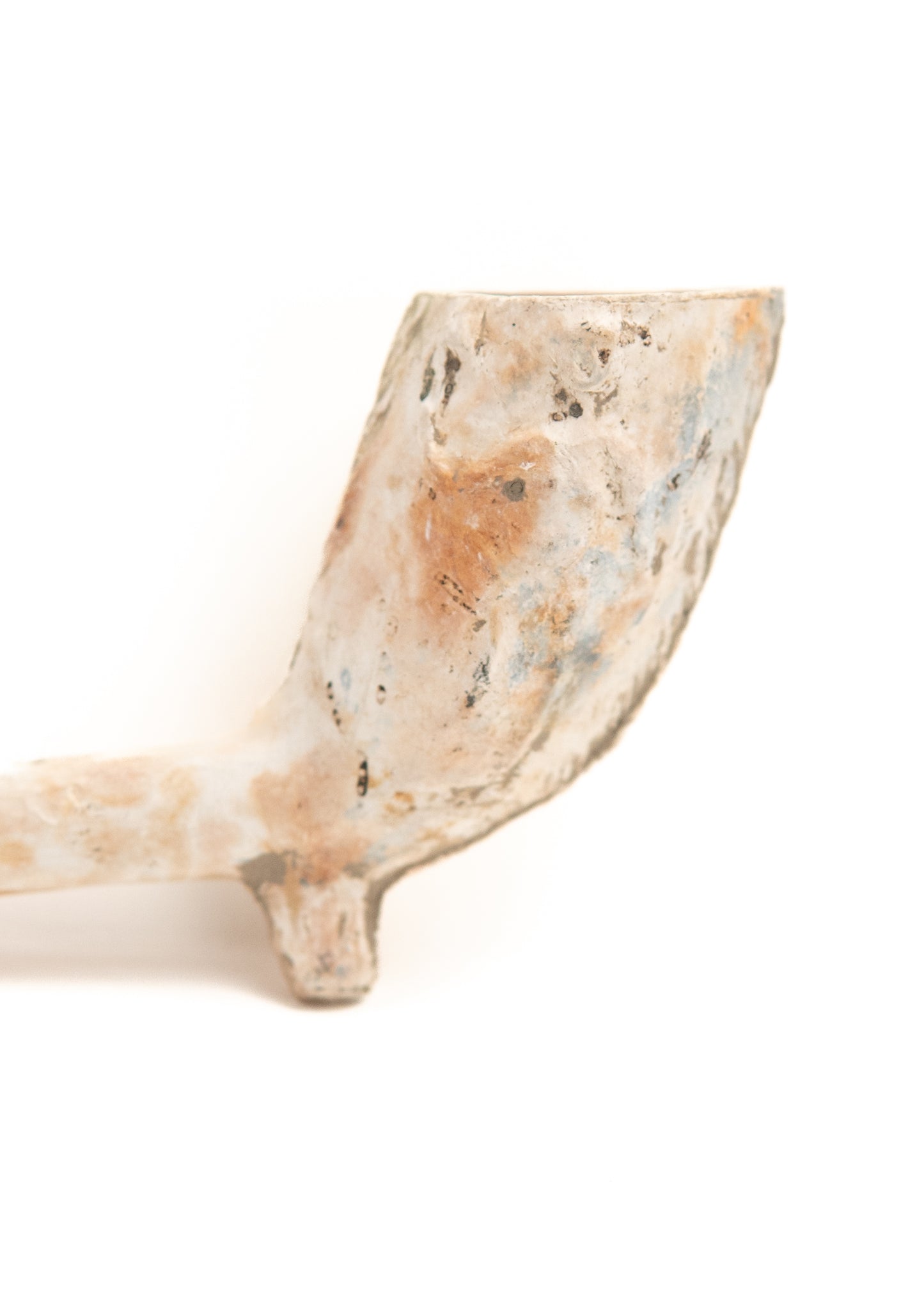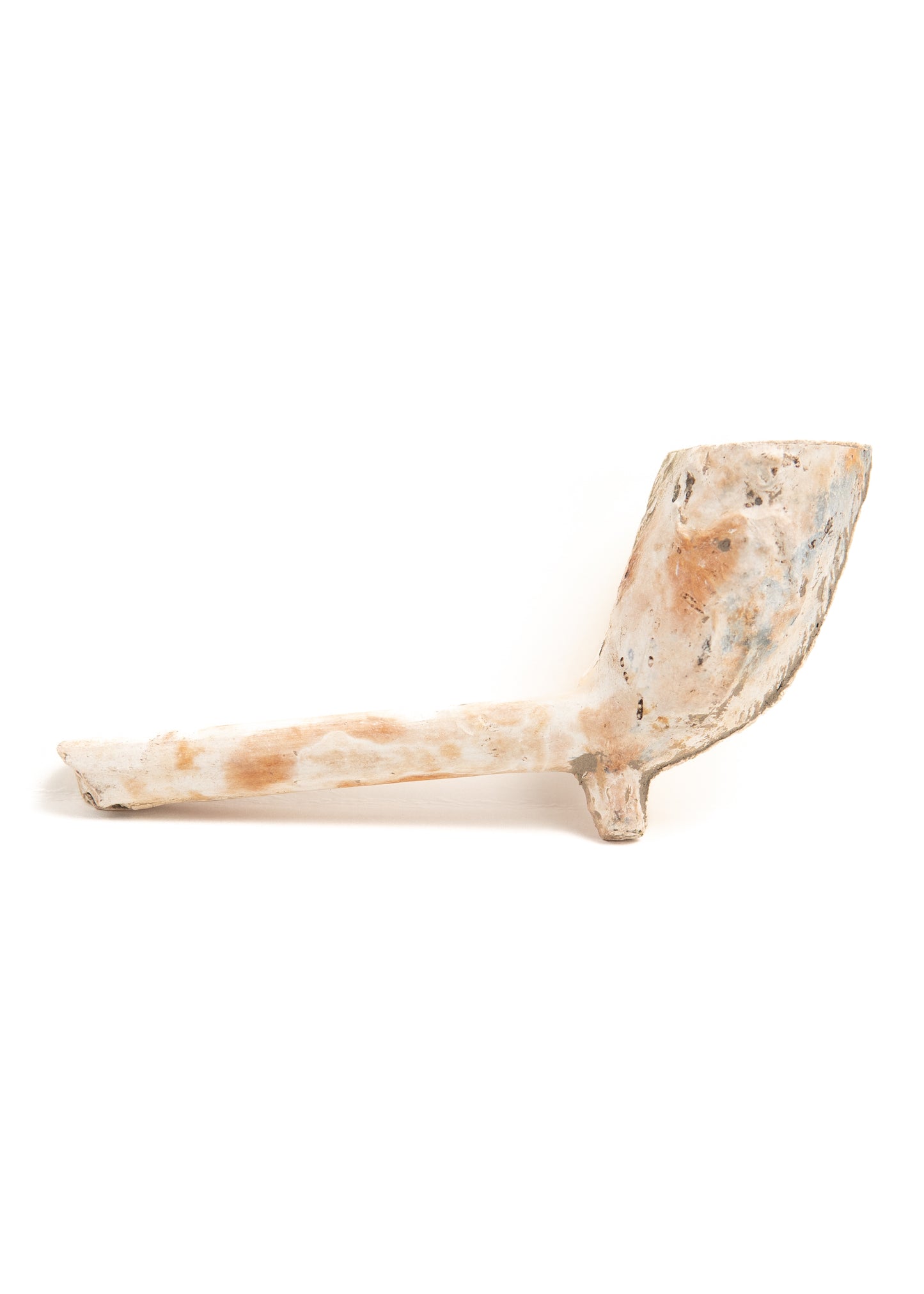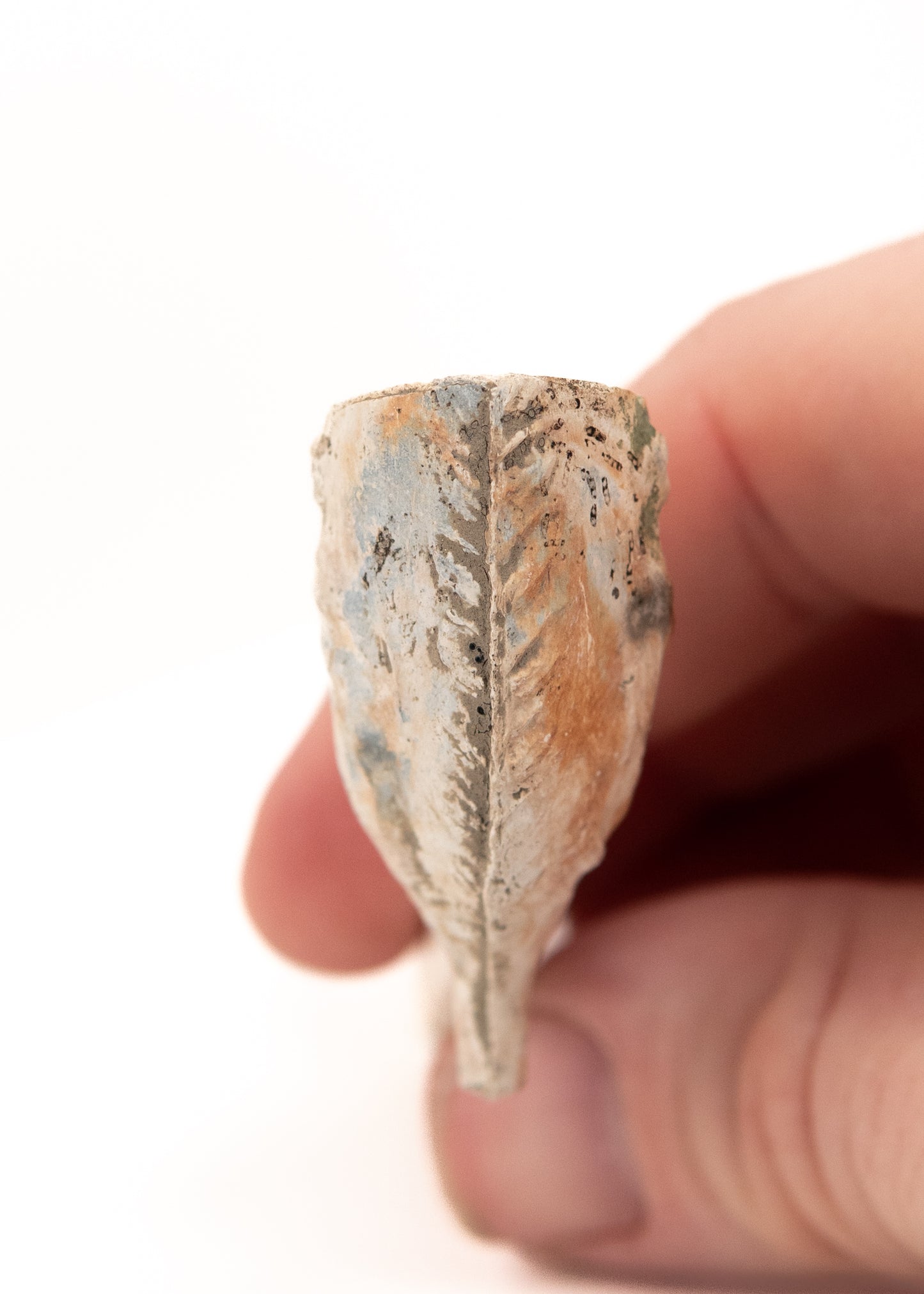Specs Fine Books
1807 SLAVERY & ABOLITION. Wedgewood Clay Abolitionist Anti-Slavery Pipe.
1807 SLAVERY & ABOLITION. Wedgewood Clay Abolitionist Anti-Slavery Pipe.
Couldn't load pickup availability
A very rare survivor, very similar in condition and certainly the same production as that catalogued by the British Museum collection as below.
These are exceptionally rare survivors as they were fragile, by nature of the pipe construction and shape and its' being composed of clay, and by the fact of their everyday usage. We trace no examples in the trade.
From the British Museum:
"Clay tobacco-pipe bowl, incomplete with damaged spur. Moulded in relief on the left side of the bowl with a figure of an African slave, naked to the waist, kneeling on his left leg, and with chains binding his hands. His hands are raised in front of him, as if imploring the female figure of Liberty, moulded in relief on the right side of the bowl. The incomplete figure of Liberty is represented holding a long staff surmounted by a pilleus, the cap of liberty. The bowl seams on front and back display paired leaf moulding, each pair separated by a shoot or stalk on either side of the bowl. Broken at stem; also three separate fragments of stem.
The [present] design of the anti-slavery/abolition of the slave-trade motif is thought to derive from the Wedgwood jasper medallions of the late 18th century, with the motto 'Am I not a man and a brother?'. It was adopted as the emblem of the Society for the Abolition of the Slave Trade, established in 1787.
Anti-slavery pipes are very specific to eastern England and appear only to have been produced in that area. Known production centres include Hull, Gainsborough, Lincoln, Market Rasen, Wisbech and Norwich. The majority date to the period c1810-1850.
For further information see David J Woodcock, 'Pipes attributed to William Hensell, clay tobacco-pipe maker of Norwich Norfolk c.1825-c.1853', in The Archaeology of Clay Tobacco Pipes series, Vol IX, 1985 (BAR British Series 146 (ii), 325-336), who comments:
'Since the slave design was originated for the struggle for abolition, the pipes, depending on exactly when they were made, can either represent popular support for the abolition of slavery, or progressively after 1807 and 1833/4, assume a more commemorative association with the successful abolition itself. The distinctly regional distribution of these pipes may be explained partially by the bonded nature of the largely rural economies in which these pipes seem to have been so popular. The slavery issue would perhaps draw much support and sympathy from rural populations where poverty and hereditary 'bondage' to the land tied the local workers to conservative agrarian systems. Many of the working poor might have seen themselves as slaves to the earth, let alone slaves to oppressive masters and overlords.'"
The moulded figures more evident in person than in the images, as with the British Museum example, the pipe itself has loss to the chamber. The bowl ornaments are well-rubbed and handled, but very evident in person. Images 1 and 2 show the kneeling slave. Image 3 lady liberty. And image 6 the olive branches of peace.
A very rare survivor.
Share
